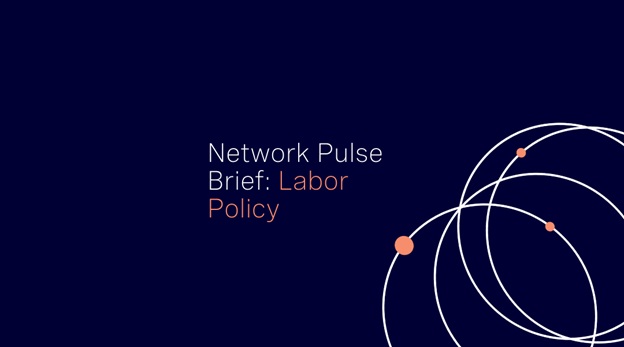CHIEF US ECONOMIST & HEAD OF MACRO STRATEGY AT AN INVESTMENT BANK
The high degree of striking activity is due to the confluence of two factors. First, the strength of the US labor market, shown in job creation, wage growth, and historically high job openings ratio (especially in e.g. business services or education). The second is the Biden administration’s rhetoric favoring unionization and collective bargaining. These together have come together post-COVID to encourage unions to organize high levels of strikes to extract a greater bargaining share from companies. However, as the recent last-minute tentative deal averts a railway worker strike pushed by the Biden administration, there is a limit to how much the US government is willing to tolerate this if it can cause further supply-chain disruptions and increase macroeconomic inflation. The political winds may further turn away from workers after the midterm elections when it is expected that the Democrats will lose control of at least one chamber of Congress. Finally, with a Fed-induced economic slowdown looming and labor participation rates continuing to rise, workers may lose their ability to bargain as aggressively as they are currently, which should reduce striking activity.
ECONOMIST AT A TOP CONSULTING FIRM
Strike action is higher this year compared to 2021 but in general, industrial action is structurally lower in the United States thanks to union-busting in the 1980s. With higher interest rates and slower growth ahead in the United States, many workers will likely find themselves having less bargaining power going forward – reducing the odds of more strike action in the future. Legislators can also raise the minimum wage, essentially lifting the salary floor for many jobs, but that’s unlikely to happen under a divided government and also has the danger of increasing inflation risk when American households are citing inflation concerns as their number one worry. In short, there’s unlikely to be much political consequence resulting from higher strike action, and a likely looser labor market ahead also reduces the confidence for employees to embark on strike action.
SENIOR FELLOW AT A US-BASED THINK TANK
2022’s strikes are concentrated in the services sector (compared to 2021’s concentration in health); they reflect demands for higher wages to keep up with inflation and coping with staffing shortages – while companies report record earnings. Most strikes (as in 2021) have been short and concentrated, with major labor actions below 2019. The Government has triggered mediation quickly when strikes have looked like they would be more prolonged and serious (California ports in 2020 and 2021, railroads in 2022), and they have generally tried to tamp down tensions and focus discussions on specific demands. They have also pressed for relief through the federal budget for some broader demands (eg, child care). Politically, broad concerns about inflation have undermined public confidence in how Democrats are handling the economy, which has muted the support that party leaders might have given to labor unions otherwise. While labor actions have addressed some specific conditions, unions in the U.S. are far from restoring the power they had in the 1950s-60s. Tight labor markets will continue to be more important than unions in pushing companies to offer better wages and conditions.

